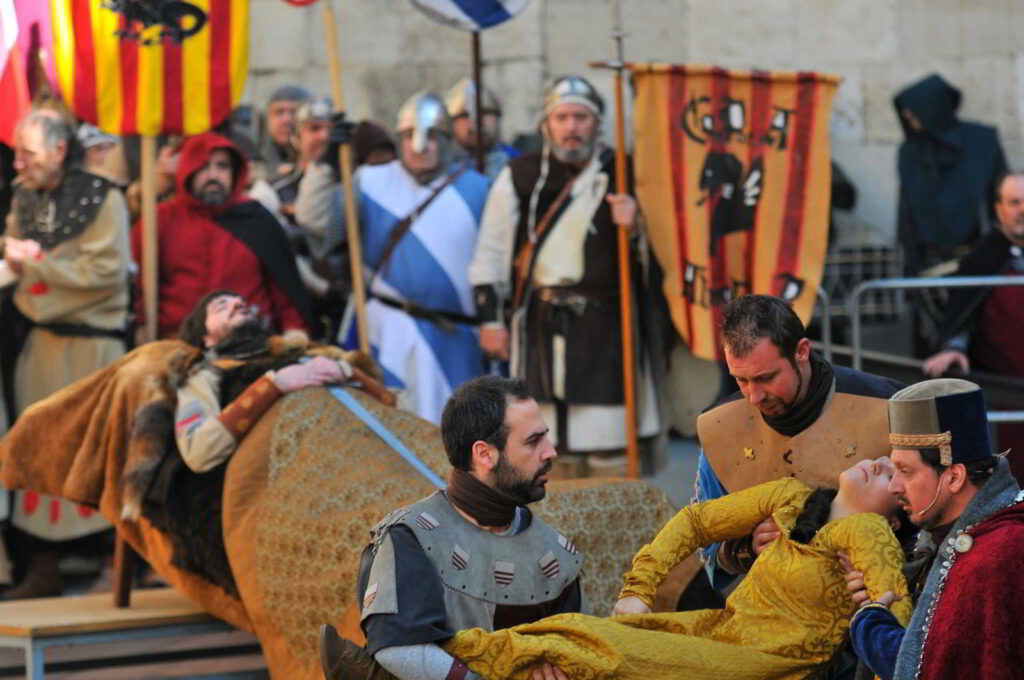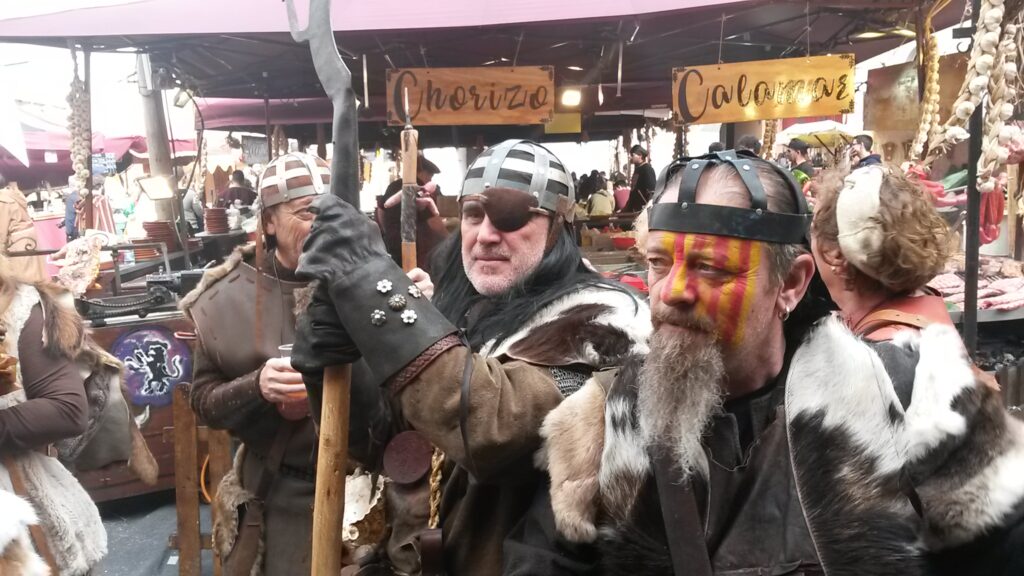THE WEDDING OF ISABEL DE SEGURA
Since 1997, a medieval festival called LAS BODAS DE ISABEL DE SEGURA has been celebrated in the city of Teruel, a festival that has its origin in the legend of LOS AMANTES DE TERUEL, a legend well known throughout Spain.
An epitome of this fiction is the following: Two young people, Isabel de Segura and Diego de Marcilla, have loved each other since they were children. Isabel’s family has a lot of assets, but Diego is second best and will not receive an inheritance from his ancestors. Isabel’s father does not look favorably on this relationship, and wants to marry his daughter to someone with a better economic, social, and political position. He is also in a hurry to marry her off quickly, so he urges his daughter to decide on one of the rich suitors who surround her, one of them, neither more nor less than the brother of the tenant of Teruel and lord of Albarracín, D. Pedro de Azagra. Diego de Marcilla, who is convinced that Isabel’s father will not allow him to marry Isabel if he does not have wealth, leaves Teruel in search of his fortune in the year 1212, but not before extracting from Isabel the promise that he will wait 5 years. Isabel agrees and Diego goes to war -it is said that he was in the battle of Las Navas de Tolosa- Isabel gets her father, not very willingly, to respect his word, to Diego. Isabel endures as best she can the absence of her beloved and the pressures of her father to marry Don Pedro, who, with great patience, has not ceased in his courtships.
Years go by and nothing is known about Diego, and 5 years have passed without hearing from the boy. Isabel has to fulfill the commitment given to her father and that day the wedding between a devastated Isabel and a Pedro de Azagra full of satisfaction and joy is celebrated. However, sometimes life is cruel. That same day in the evening Diego arrives in Teruel. His estate has increased considerably and he is overjoyed to see his beloved and marry her. He stops at a tavern on the outskirts of the town, and there he finds out, through the conversations of the parishioners, that Isabel, his Isabel, has been married that very day. The news makes such an impression on him that he goes mad with pain and runs like a madman to his beloved’s house. With the complicity of a maid, he manages to enter Isabel’s quarters. Her husband is absent from those rooms. Diego tries to convince her to run away together, plus Isabel is a bridesmaid, and now she owes it to her husband. Exhausted by the girl’s continuous refusals, Diego starts to leave, but at the last moment he asks for a kiss, just one kiss, from Isabel. Heartbroken, she also denies it, citing fidelity to her husband. Diego marches and in the street, in front of Isabel’s house, falls dead.
When the burial is celebrated, a figure of a woman, with her face covered by a black veil, approaches the body of the unfortunate boy. Her bearing is so imposing that no one dares to stop her. Once next to the catafalque, the mysterious woman gets rid of the veil, and Oh! Astonishment , she kisses Diego’s corpse and falls dead!
“It was Isabel de Segura
sadness figure
That his troubled love seeks
And in the darkness he finds”
(part of the poem written to the Lovers by Gregorio A. Gómez)
And they were buried together, according to the families and Isabel’s husband, and in our time you can see their mummies, under some marble sculptures made by Juan de Ávalos, in the Mausoleo de los Amantes, built in Teruel, next door. of the Church and Tower of San Pedro.

THE MEDIEVAL FESTIVAL OF TERUEL AND THE GROUPS
That is what the legend says, but science does not support that these mummies belong to Diego and Isabel, since they have been subjected to the carbon 14 test and date from the 15th century, when the events narrated correspond to the beginning of the 13th century. Others say that this legend is copied from another Italian one, that of Girolamo and Salvestra . And finally, many researchers have studied the event and maintain very serious doubts about its authenticity, even outright denying its existence.
But this is the least of it, the people of Teruel believe it as their own and for us , in the end and also Teruel residents, it is enough to affirm its credibility, to the point that, since 1997, a festival has been held in the capital of Teruel Medieval street recreation in the historic center of Teruel, in which amateur actors give life to Diego and Isabel, and a lot of secondary characters. All this seasoned with a large medieval market.
From the beginning, the medieval festival around the characters of Diego and Isabel, was welcomed with unusual enthusiasm by the population of Teruel, and in the heat of that fervor, the Wedding Groups arose, made up of groups of friends that fill the entire city. with their haimas , their medieval dresses and utensils, and that turn Teruel, in the third week of February (specifically from Thursday to Sunday, both inclusive) in a true medieval city, which attracts a large number of tourists, to the point of overflowing the hospitality of Teruel and towns around 30 km. From the capital. The creation of the Wedding Groups, about 150, was a great success, and the main hallmark compared to other medieval festivals that are celebrated throughout the Hispanic geography. And it is that the involvement of the people of Teruel in this festival is unparalleled, because, apart from the Groups, the majority of the population not integrated into them, also dresses in medieval clothing, and contribute to adorn the city, which, for 4 days of February, it becomes the Spanish capital of the Middle Ages.


